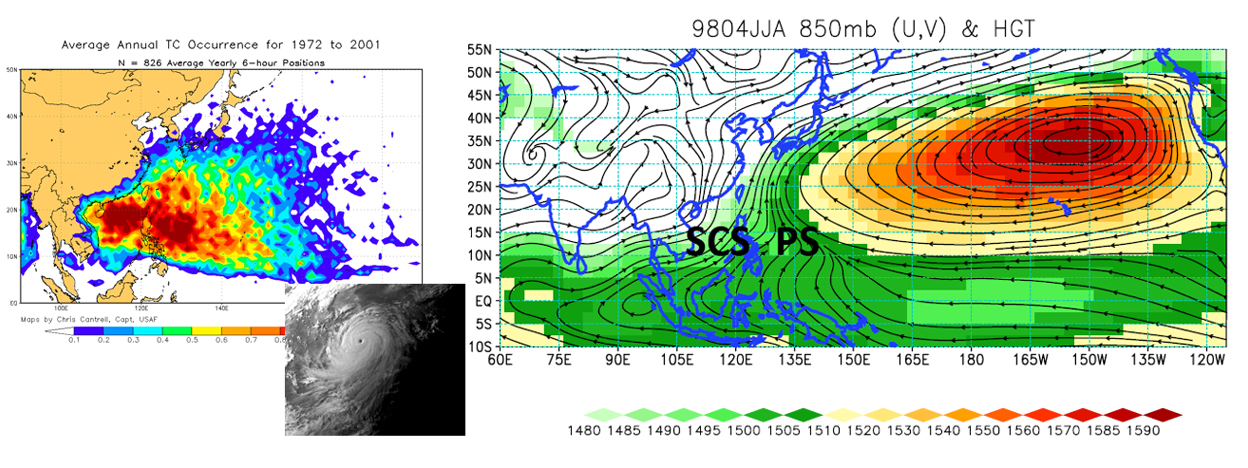


Figure caption: (Let) typhoon distribution, (right) low-level atmospheric circulation in the wester North Pacific (Curtesy of C.-H. Wu). (Left) reddish and bluish colors indicate more and less typhoon passages, respectively. (right) Reddish color marks the subtropical high and green curving region between Taiwan and Philippine is where the monsoon trough prevails. Note the collocation of the typhoon active region and the monsoon trough. 。
Typhoon is the most severe weather system in the Western North Pacific. It brings natural disaster but also abundant water resources to Taiwan. Traditional wisdom tells us the dominant influences of large-scale atmospheric and oceanic environment on typhoons. By contrast, the impact of typhoons with strong winds and large heating on the large-scale circulation and climate has been largely ignored. What would happen if there were no typhoon? Would the subtropical high and monsoon trough be stronger or weaker? We applied the tropical cyclone (TC)-removal technique to remove all tropical cyclones from the observational analysis for the past four decades and quantified the differences in climate states with and without TCs. Through this methodology, we are able to quantify the impacts of TCs on climate mean states and variability. Our other study found that the ocean surface temperature would warm even more in the past few decades if not for the cooling effect of TCs on the ocean surface.
The results indicate that, without TCs, the subtropical high would become much stronger and dominating the entire tropical western North Pacific and by contrast the monsoon trough would almost disappear. The subseasonal and interannual and even interdecadal climate variability in the western North Pacific would be weakened by 40-60 percent. This indicates a more stable weather and climate condition. The reason for this dramatic effect is the clustering effect of the monsoon trough on the occurrences of TC. When becoming active in a strong monsoon trough, TCs with their strong winds and large heating would further enhance the monsoon trough. Such a clustering effect would not occur in the environment of strong subtropical high and therefore little feedback would occur. This dynamical asymmetry would lead to an amplification of climate variability in the western North Pacific because of the existence of TCs.
TCs are largely missing in the current state-of-the-art climate models that are used in the projection of future climate. Our findings suggest the misrepresentation of climate variability in those models that would likely under-project the potential changes in the expected warmer climate.
Key points
More information